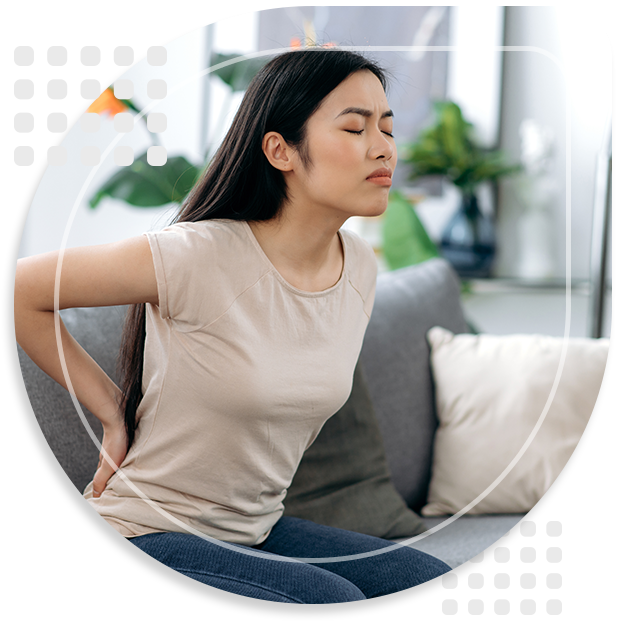Osteoporosis
During childhood,
our bodies build bone faster than it breaks down, allowing the bones to become larger and stronger. However, as we grow older, the bone remodeling process changes and new bone gets laid down at a slower rate, which means that the body is producing new bone more slowly than it is breaking down old bone. Over time, the bones gradually grow less dense and more porous, resulting in a condition called osteoporosis wherein which the bones become thin, brittle, and significantly more prone to breakage.
The female hormone estrogen helps protect the body from this bone loss, but after menopause the ovaries produce less estrogen than they once did. This decrease in the body’s estrogen levels triggers a period of rapid bone loss in women that starts approximately one year before the final menstrual period and lasts for about three years thereafter. As a result, women are statistically four times more likely to suffer from osteoporosis than men of the same age.

Osteoporosis Treatment
A bone mineral density (or BMD) test is a reliable and painless way to ascertain valuable information about bone health, genetics, and early menopause and to catch osteoporosis before problems arise. It is often recommended for women over the age of 65, as well as for those who have other risk factors (such as a history of smoking, genetics, early menopause, or certain diseases like rheumatoid arthritis or lupus) as well as for menopausal women who have recently suffered from bone fractures.
The best way to avoid the effects of osteoporosis is to prevent them from occurring in the first place, with healthy diet and exercise. Eating foods that are rich in calcium and vitamin D can help protect your bones no matter what your age and regular, weight bearing exercise helps the body build bone and maintain it. Researchers have found that women who walk just a mile a day have four to seven more years of bone reserve than women who do not exercise regularly. In all cases, be sure to consult with your doctor before beginning a new exercise program to avoid activities that could worsen, rather than help, your condition.
Sometimes prevention is not enough so, treatments for established osteoporosis generally include various medications designed to supplement or rebuild bone. Hormone therapy with estrogen supplements is also believed to help alleviate or even prevent the increased rate of bone loss that can lead to osteoporosis in women who have undergone menopause. Physical therapy and a regular exercise program that maintains muscle tone and joint health can also help to reduce or prevent future bone loss. Consult with your doctor at Gynecology Associates of Gwinnett to determine which treatment methods are best suited to your specific needs.
Osteoporosis FAQs


